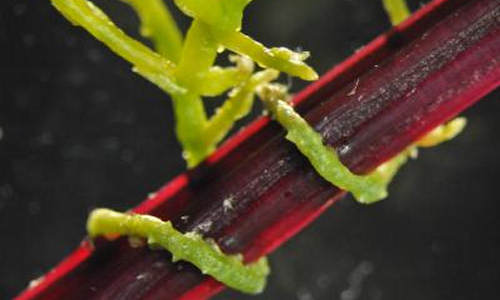Most plants try to turn towards the sun. Scientists from the University of Gothenburg have worked with Finnish colleagues to understand how light-sensitive proteins in plant cells change when they discover light. The results have been published in the most recent issue of Nature.
The family of proteins involved is known as the “phytochrome” family, and these proteins are found in all plant leaves. These proteins detect the presence of light and inform the cell whether it is day or night, or whether the plant is in the shade or the sun.
“You can think of them as the plant’s ‘eyes’. Our study has shown how these eyes work at the molecular level,” explains Sebastian Westenhoff at the Department of Chemistry and Molecular Biology at the University of Gothenburg.
Molecules change in the light
Most plants try to avoid the shade and grow towards the light, which enables them, among other things, to consume more carbon dioxide through photosynthesis. Proteins known as “phytochromes” control this process. The phytochromes in the plants are thus changed through the light radiation, and signals are passed onwards to the cells.
Phytochromes have, as do most other proteins, a three-dimensional molecular structure. Light is absorbed by the phytochromes and the structure of the protein changes.
The scientists have studied this structural change in phytochromes from bacteria, since it is possible to obtain sufficient material to work on from bacteria.
“We already knew that some form of structural change was taking place, since the light signals must be transferred onwards to the cell. What we didn’t know, however, was how the structure changed, and this is what we have revealed. Nearly the complete molecule is rebuilt,” says Sebastian Westenhoff.
More efficient crops
The discovery increases our understanding of how phytochromes work. This may, in turn, lead to new strategies in the development of more efficient crops, which may be able to grow where there is little light.
“Proteins are the factories and machines of life, and their structures change when they carry out their specific tasks. At the moment, it’s usually not possible to determine these changes. But I believe that we can use similar experiments to determine many important structural changes in phytochromes and other proteins,” says Sebastian Westenhoff.
New measurement method
A new measurement method that Sebastian Westenhoff has developed has made the study possible. This method is based on using laser light to initiate the structural change. X-rays are then used to image the structural change.
The project has its origin in an approach made by scientist Janne Ihalainen from the University of Jyväslkyla two years ago.
“He asked whether we could use my method on phytochromes, which he had recently started working on.”
Story Source:
The above story is based on materials provided by University of Gothenburg, Carina Eliasson.





